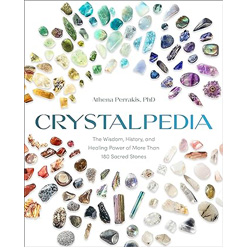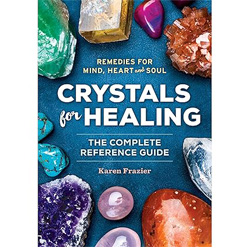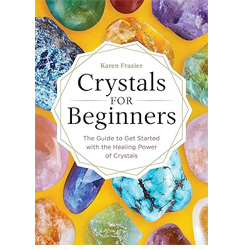- Jewelry
- Inspiration
- Our imagination
- Birthstones
- Celebrating with Eternal Flowers
- Druids and druidesses
- Flower meanings
- History, archeology jewelry
- History and healing properties of metals
- History and healing properties of stone
- Illumination jewelry
- Japanese symbols
- Maya calendar jewelry
- Stone color symbolism
- Stones catalogue
- Wedding anniversaries
- Searches a theme on the site
- Good Deals
- Paintings
- About
- Contact
JEWELRY
- Anklet
- Bracelets
- Brooches
- Cufflinks
- Earrings
- Pendants & Necklaces
- Rings
- Draw your jewelry
- How to clean your jewel
- Metal we used
INSPIRATION
- Our imagination
- Birthstones
- Celebrating with Eternal Flowers
- Druids and druidesses
- Flower meanings
- History, archeology jewelry
- History and healing properties of metals
- History and healing properties stones
- Illumination jewelry
- Japanese symbols
- Maya calendar jewelry
- Stone color symbolism
- Stones Catalogue
- Wedding anniversaries
- Searches a theme on the site

Precious and semi-precious stones: history, properties and lithotherapy
Our vision of stones and our jewelry
Since ancient times, stones have fascinated humanity through their beauty, brilliance, and the mysteries they seem to hold. In our jewelry work, we place these stones at the heart of our creations, exploring their shapes, colors, and textures to tell a story through each piece. Naturally curious and deeply interested in history and archaeology, we have sought to understand stones in all their dimensions: their geological origins, their journey through civilizations, and their place in ancient knowledge systems, particularly in lithotherapy.
Our approach is прежде all historical and scientific. We focus on the deep relationship humans have forged with matter, on the virtues attributed to stones, and on the ways they have shaped tools, ornaments, and jewelry since the earliest times. Stone is not merely a material; it is a witness to human history and a mirror of the cultures that have valued it. Our texts reflect this exploration and do not constitute any therapeutic or medical recommendation.
Our catalog evolves alongside our creations and the stones we incorporate into them. Each description explores three complementary dimensions: the physical characteristics of the stone (name, origin, hardness, etc.), its history and the legends associated with it across different cultures, and the virtues that have been attributed to it, within a historical and symbolic approach to lithotherapy.
Each piece of jewelry thus becomes a journey: a dialogue between stone, time, and the person who wears it. We invite you to explore this connection between matter and humanity, between beauty and history, and to discover the stories each stone quietly whispers.
What is lithotherapy?
In order to present the virtues of fine stones in our texts, it is important to first define what lithotherapy is and how it has been practiced.
Lithotherapy, also known as “stone therapy,” is an ancient practice that involves the use of crystals and minerals with the aim of promoting physical and emotional healing. According to various traditions, each stone is believed to possess a particular energy or vibration that may act on the body and emotions, helping to soothe certain ailments, relieve tension, or support recovery.
It is based on the idea that stones have a unique vibrational or energetic signature, which some cultures have associated with the regulation of energy flows within the body and the balance of emotions. These concepts have often been linked to chakras, or energy centers, within symbolic and spiritual practices.
Origin and history of lithotherapy
The use of stones and the therapeutic virtues attributed to them dates back several millennia. Numerous ancient civilizations, such as the Mesopotamians, Egyptians, Hebrews, Greeks, Aztecs, Japanese, Chinese, and Indians, incorporated minerals into their traditional medical and spiritual practices.
For example, the tablets of Nippur, originating from Mesopotamia, bear witness to the combined use of minerals and plants in the medicine of the time. More than 4,000 years old, these tablets provide valuable insight into the medical practices of ancient Mesopotamia. The Mesopotamians believed that minerals and plants possessed healing properties and could be used to treat a wide range of illnesses and disorders. These texts also describe methods of preparation and administration of remedies, as well as the rituals and ceremonies associated with medical practices of that era.
In ancient Egypt, malachite was used not only for the curative virtues attributed to it, but also as a stone of spiritual protection, while lapis lazuli symbolized divine connection with the heavens and the world of the gods.
The Greeks, for their part, believed that amethyst protected against intoxication, and warriors wore hematite amulets to symbolically strengthen themselves before battle.
Chinese and Aztec cultures also placed great importance on stones for their spiritual and symbolic dimensions. In China, jade, known as “the stone of heaven,” was revered for its association with immortality, purity, and harmony. Among the Aztecs, obsidian, a sacred stone, was used to craft ritual objects, ceremonial weapons, and protective talismans.
In 1644, Anselmus Boëtius de Boodt, physician to Emperor Rudolf II, published a nearly 750-page work entitled The Perfect Jeweler, or the History of Stones, in which he подробно discusses the healing properties attributed to stones. This work stands as a major reference in the history of lithotherapy, as it compiles the knowledge, beliefs, and observations of its time concerning the therapeutic virtues of minerals. It also describes the superstitions, symbolic uses, and the rituals and magical practices associated with each stone.
Similarly, in 1748, The Encyclopedia of Drugs by M. Lémery, physician to Louis XIV, also mentions the virtues attributed to stones. This work, which was authoritative in the field of pharmacology at the time, provides valuable insight into the role of minerals in traditional medicine.
In the 19th century, Monsieur Guibourt, professor at the École Supérieure de Pharmacie in Paris, published History of Simple Drugs in three volumes, the first of which is devoted to mineral substances.
Lithotherapy experienced a revival in the 20th century with the rise of the New Age movement in the 1970s, which promoted a return to so-called gentle and holistic medicines. Authors such as Katrina Raphaell contributed to popularizing the use of crystals, particularly in the pursuit of emotional and spiritual harmony. Today, this practice is frequently associated with chakra balancing and a search for overall energetic well-being.
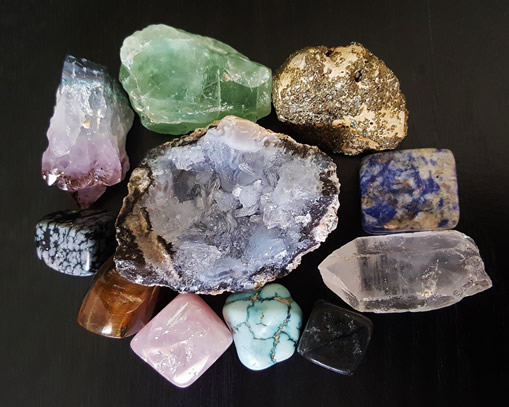
How to use healing stones
Lithotherapy is based on the idea that stones emit a specific form of energy believed to act on human beings with the aim of healing, whether physical, emotional, or spiritual. According to this approach, each stone is thought to possess particular properties that may help address imbalances, relieve certain ailments, or promote overall well-being, often alongside other traditional or spiritual practices.
These properties are frequently associated with the colors of the stones, which also play an important symbolic and psychological role. Green, the color of nature, renewal, and healing, is traditionally linked to balance and regeneration. Stones such as emerald or jade are therefore often mentioned in connection with physical and emotional healing processes. Blue, on the other hand, is associated with mental clarity, calmness, and soothing qualities. Lapis lazuli or turquoise are thus cited for their supposed ability to support communication, ease emotional tension, and encourage inner expression.
In practice, stones may be worn on the body in the form of jewelry, such as pendants, earrings, bracelets, or rings, in order to maintain prolonged contact with the body. They may also be placed within a living space to create an atmosphere considered conducive to healing, rest, or energetic harmonization. Some traditions also mention the use of stones in the form of elixirs, with the intention of transferring their energetic properties to water.
Stone elixirs represent a particular method within lithotherapy. This practice involves immersing a stone in water so that its vibrational properties are believed to be transmitted to the liquid, which may then be consumed or used for healing purposes. It is nevertheless essential to note that certain stones can release toxic or corrosive substances. For minerals such as malachite or galena, an indirect method is recommended, consisting of placing the stone in a separate container before immersing it in water. By contrast, stones such as rose quartz or amethyst are traditionally considered safe for direct contact with water.
Lithotherapy is also closely linked to the concept of chakras, notably derived from Kundalini Yoga and Indian traditions. According to this perspective, stones may be used to unblock, balance, and harmonize the body’s different energy centers, with the aim of physical, emotional, and spiritual healing. Chakras are described as energy centers located along the spine, each associated with a specific color, symbolic functions, and particular aspects of being.
- The root chakra (Muladhara), located at the base of the spine, is associated with the color red and the earth element. Stones such as red jasper or hematite are mentioned for supporting grounding, vitality, and issues related to physical and emotional stability.
- The sacral chakra (Svadhisthana), associated with the color orange, is linked to creativity, sexuality, and emotions. Carnelian is traditionally cited for stimulating vital energy, supporting creative expression, and accompanying emotional imbalances.
- The solar plexus chakra (Manipura), yellow in color, is connected to willpower, self-confidence, and personal empowerment. Stones such as citrine or golden topaz are associated with the healing of blockages related to self-esteem and personal strength.
- The heart chakra (Anahata), located at the center of the chest, is associated with love, compassion, and emotional healing. Green stones such as emerald or jade are mentioned in relation to emotional wounds, while rose quartz is traditionally linked to love, gentleness, and self-acceptance.
- The throat chakra (Vishuddha), represented by the color blue, governs communication and self-expression. Stones such as lapis lazuli or aquamarine are symbolically used to support the healing of issues related to speech, expression, and emotional communication.
- The third eye chakra (Ajna), indigo in color, is associated with intuition, inner perception, and awareness. Amethyst or sapphire are mentioned for accompanying processes of understanding, introspection, and mental clarity.
- The crown chakra (Sahasrara), associated with violet, is linked to spirituality and connection to the sacred. Clear quartz and amethyst are traditionally used to encourage spiritual healing and an expansion of consciousness.
Today, lithotherapy is experiencing renewed interest within practices related to well-being, personal development, and spirituality. Rituals such as meditation with crystals or stone baths, where stones are placed in water or around the body, are increasingly common. Through these practices, followers seek to promote healing, calmness, rest, and personal fulfillment, within a global and symbolic approach to well-being.
Color symbolism with stones
The symbolism of gemstone colors plays a central role in lithotherapy, with each color traditionally associated with specific energetic properties. These associations are based on ancient symbolic correspondences, often shaped by observations of nature, color psychology, and the spiritual or medical traditions specific to each culture.
Depending on beliefs, historical periods, and societies, these correspondences may vary and do not constitute a universal or fixed system. They nonetheless share a common goal: to express an attempt to understand the relationship between color, mineral matter, and the physical, emotional, or spiritual states of human beings.
Thus, certain colors are associated with physical healing, others with emotional soothing, vitality, or spiritual elevation. Blue stones, for example, are often evoked for their symbolic qualities linked to calmness, communication, and mental clarity, while red stones are associated with energy, vital force, and grounding. Other hues, such as green, yellow, or violet, are traditionally connected with balance, confidence, or spirituality.
Through these chromatic correspondences, lithotherapy seeks to harmonize body and mind by relying on a symbolic reading of colors and their perceived resonances. This approach fits within a cultural and interpretative vision of well-being, reflecting how human societies have, over time, attributed meaning and virtues to the colors of stones.
Color symbolism with stones Black Blue Brown Dark blue Gold Green Grey Light blue Orange Pink Purple Red Silver White and transparent Yellow
History and contribution of metals
Metals occupy an essential place in the history and development of human societies. Although they originate from minerals, they are addressed here separately from stones, as they form the very foundation of our craft as jewelers and play a central role in the creation of our pieces. Their mastery marks a decisive stage in the evolution of techniques, tools, craftsmanship, and humanity’s symbolic forms of expression.
Since antiquity, metals have also been present in traditions related to lithotherapy. According to ancient beliefs and bodies of knowledge, they are perceived as energetic conductors or amplifiers, capable of channeling, transmitting, or reinforcing the properties attributed to stones. Used on their own or in association with minerals, they take part in a symbolic reading of the interactions between matter, the body, and the mind.
Metals such as gold, silver, copper, and iron are thus mentioned across many cultures for their specific qualities. Gold is often associated with light, vitality, and the solar dimension; silver with the moon, intuition, and receptivity; copper with circulation and balance; and iron with strength, protection, and grounding. Within these traditions, such metals are believed to promote overall harmony and to accompany the circulation of so-called healing energies, on both a physical and a symbolic level.
As with stones, these interpretations are rooted in a cultural, historical, and symbolic approach. They reflect the ways in which human societies have sought to understand and make use of the properties of matter, attributing to metals roles that go far beyond their purely utilitarian function, without in any way constituting therapeutic or medical recommendations.
History and contribution of metals Brass Copper Gold Silver
History and vertues of stones
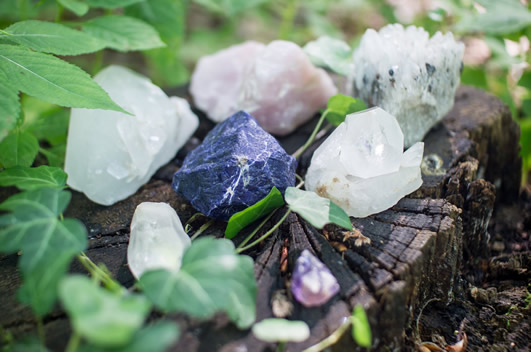
Stone properties and virtues already present on our website
To learn more about litotherapy, we recommend you the following books:

